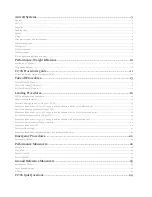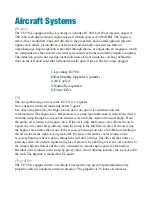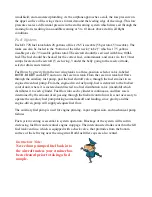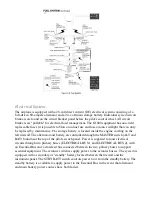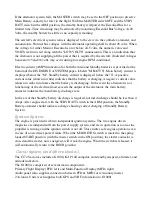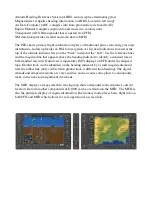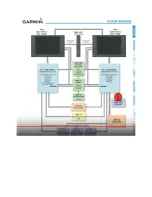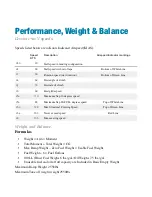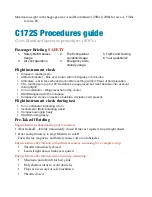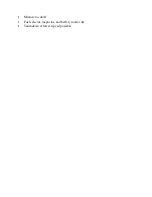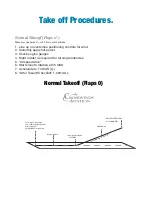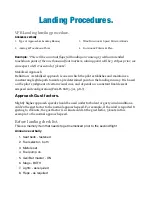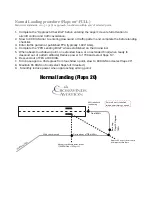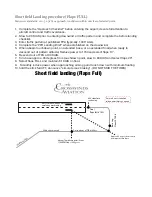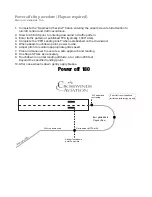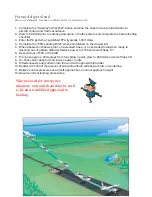
If the alternator system fails, the MASTER switch may be set to the OFF position to preserve
Main Battery capacity for later in the flight. With the MASTER switch OFF and the STBY
BATT switch in the ARM position, the standby battery will power the Essential Bus for a
limited time. Time remaining may be estimated by monitoring Essential Bus Voltage. At 20
Volts, the standby battery has little or no capacity remaining.
The aircraft’s electrical system status is displayed to the crew via the voltmeter, ammeter, and
annunciators. Normal bus voltages with the alternator operating shall be about 28 volts. When
the voltage for either Main or Essential is at or below 24.5 volts, the numeric value and
VOLTS text turns red along with the "LOW VOLTS" annunciation. This is an indication that
the alternator is not supplying all the power that is required by the aircraft. (Indicated voltages
between 24.5 and 28 volts may occur during low engine RPM conditions).
Electric current (AMPS) indication for both the main and Standby batteries is provided at the
bottom of the EIS ENGINE or SYSTEM pages, labeled "M BATT S". Main battery current is
displayed below the "M". Standby battery current is displayed below the "S". A positive
current value (shown in white) indicates that the battery is charging. A negative current value
(shown in amber) indicates that the battery is discharging. In the event the alternator is not
functioning or the electrical load exceeds the output of the alternator, the main battery
ammeter indicates the main battery discharge rate.
In the event that Standby battery discharge is required, normal discharge should be less than 4
Amps. After engine start, with the STBY BATT switch in the ARM position, the Standby
Battery ammeter should indicate a charge showing correct charging of Standby Battery
System.
Ignition System.
The engine is provided with two independent ignition systems. The two engine driven
magnetos are independent from the power supply system, and are in operation as soon as the
propeller is turning and the ignition switch is not off. This ensures safe engine operation even
in case of an electrical power failure. When the MAGNETOS switch is rotated to the spring
loaded START position, (with the master switch in the ON position), the starter contactor is
closed and the starter, now energized, will crank the engine. When the switch is released, it
will automatically return to the BOTH position.
G1000 System (and other avionics).
The C172S avionics include a G1000, KAP 140 autopilot, and standby airspeed, altimeter, and
attitude indicators.
The G1000 is comprised of several main components:
Primary Flight Display (PFD, left) and Multi-Function Display (MFD, right)
Audio panel (also supplies connection between PFD & MFD for revisionary mode)
2 Avionics Units (each supplies both GPS and VHF information to G1000)
Summary of Contents for C172S Nav III
Page 1: ...C172S Nav III Training Manual Crosswinds Aviation 1st Edition...
Page 9: ......
Page 28: ......
Page 31: ...B False...


